
Have you ever wondered who are the greatest and strongest warriors of all time? We did too, that’s why we went ahead and gathered information about them. Learning about the types of ancient warriors and their military feats is interesting and it’s important to discuss the limits of people during a war.
No one wins in war. Especially since the loss is too great during a battle between nations. Experiences like the Great Depression also follow suit to the war. Famine, orphaned children, and violence also increase during wars. Soldiers are also victims. Shellshock and losing a chunk of their lives (and a few limbs) are common among them.
The warriors who defend their country produce heroic feats on the battlefield. Some refuse to abandon their fellow countrymen and those who successfully win wars against the enemy. As a result, the greatest warriors have their names etched into history along with their accomplishments. However, this doesn’t necessarily mean they were good people. Learning about the warrior’s feats is good, but it’s also important to know about their reasons to participate in the war.
Learning about who were the best warriors in history is beneficial. Since war continues to this day, it is a necessity to learn the cause of the wars as well to avoid repeating history. While we didn’t find out who truly the world’s deadliest warrior is, we did learn a few names worthy of that spot and compiled them here for you. Details about the origins of warriors, the names of the strongest warriors in history, and their backgrounds are listed below.
Origins of Warriors
There are many types of warriors such as foot soldiers, warlords, conquerors, and military tacticians. Warriors are those skilled in combats and take them up as professions.
The profession itself is one of the oldest historically. Hunters were one of the first types of warriors on earth. They were tasked with hunting for food and defending their tribe or clan from outside forces. Some warriors excelled better in different areas. To this day there are foot soldiers, who focused mainly on the ground. Boats also created the opportunity for navy ships and soldiers to excel at them. Bowmen, who later became snipers, were those who excelled in shooting enemies from a distance Meanwhile, fighter pilots created a disadvantage for those on the ground.
Becoming a skilled warrior meant considerable strength in ancient times. Those with power rose through the ranks and became generals or even kings. They would then spread their strength by conquering other tribes or countries using other warriors. This produced the greatest warriors under rulers from different cultures. An example of these warriors would be knights who served under their king. Mercenaries are also a type of warrior that did not serve under a leader. These warriors preferred to be paid by different people for their work. Assassins also became a popular use for the hired killer.
The Greatest and Strongest Warriors in History
Now that we know the origins of the great warriors, why don’t we learn a few of their names? Listed below are 25 of history’s best warriors! Each type of warrior we introduce includes their historical achievements, the time they lived in, and the weapons they used.
Alexander the Great

First on our list remains the most feared warrior of all time: Alexander the Great. Born in Pella, Macedonia around 356 BCE and died on June 13,323 in Babylon, Alexander the Great is known for his amazing feats. However, historians know him more as the king of Macedonia from 336 BCE up to his death. One of Alexander the Great’s most impressive feats is the sacking of the Persian empire and his travel to India.
Philip II and Olympias, who was King Neoptolemus’ daughter, were Alexander the Great’s parents. Despite this, it was Aristotle’s teachings that nurtured Alexander’s mind. Aristotle inspired Alexander with medicine, science, and philosophy. Unfortunately, Alexander disagreed with Aristotle on the topic of slavery.
Alexander was already a skilled warrior before becoming king. He had participated in the battle of Maedi and Chaeronea under his father’s will. Alexander destroyed all his rivals and was declared king after the death of his father. He even invaded the Persian Empire with the help of his men to pay his loyal warriors with the Persian wealth.
King Darius, defeated by Alexander, ran away and abandoned his family. But this action only allowed us a glimpse of Alexander’s personality. The family of the enemy, which was left defenseless, were unharmed under his care. Proving that Alexander was a compassionate ruler despite his victories.
Alexander the Great died at the age of 32. Historians debate his cause of death. Some historians believe it was malaria, while others suggest poison. Regardless, the empire could not survive without Alexander’s intelligence and strength. His son Alexander the IV and step-brother Philip Arrhidaeus were assassinated immediately and his empire separated from each other.
Genghis Khan
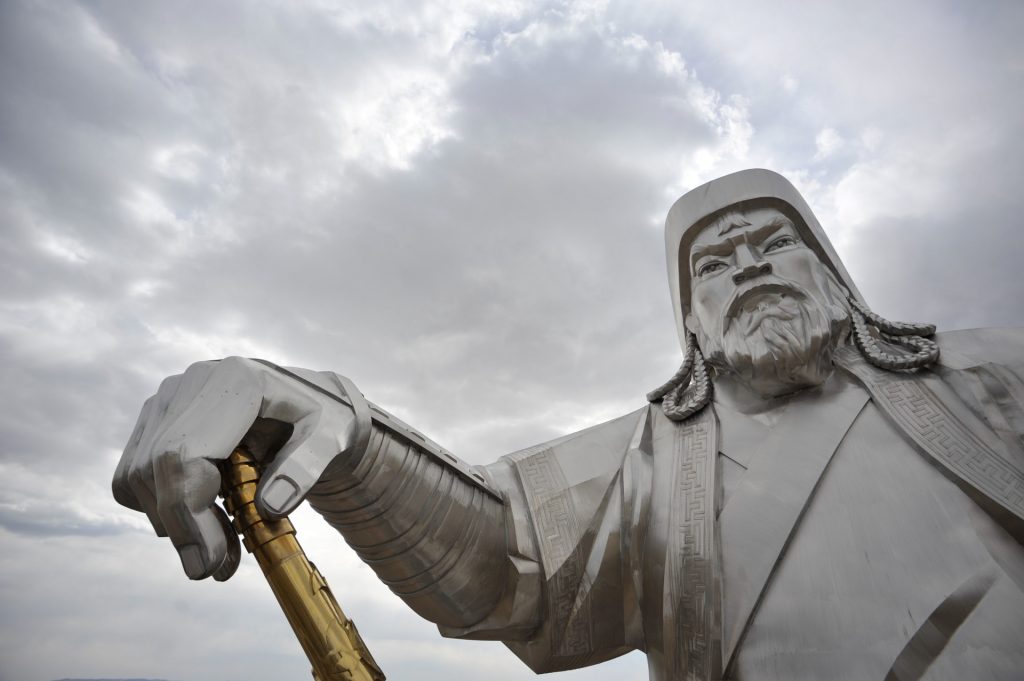
Genghis Khan is one of the most famous warrior kings in history. His real name was Temujin and was born in 1162 around Lake Baikal in Mongolia. He died on the 18th of August 1227.
His fame stems from his successful conquests against opposing tribes and the unification of Mongolia. However, Genghis Khan was also able to conquer more than just Mongolia’s territory. He sailed across the Adriatic Sea and managed to conquer different nations as well. This earned Genghis Khan’s spot as one of the greatest warriors in existence.
People know the Mongolian warrior king for both physical strength and intellect. Genghis Khan was a genius at ruling large nations despite coming from unknown origins. His method of ruling prioritized his military prowess as he favored plundering campaigns instead of trades. Historians can only gather information about Genghis through non-Mongolian sources or the Secret History of Mongols which was published in the 1200s. As a result, we know only of the invasion and destruction that led to the actions of the great Mongol Empire. These records paint a very savage group of bandits despite no actual understanding of their objectives. The truth is that Genghis led his army within a detailed and organized structure. Some of the heinous acts committed by his men only reflected against him as the spearhead of the army.
Whether he was truly a warmonger or a sympathetic conqueror remains a debate to this day. However, Genghis indeed had many lovers who birthed him many children resulting in 16 million descendants today. Archaeologists cannot find his body and still don’t know how he died.
Ashoka
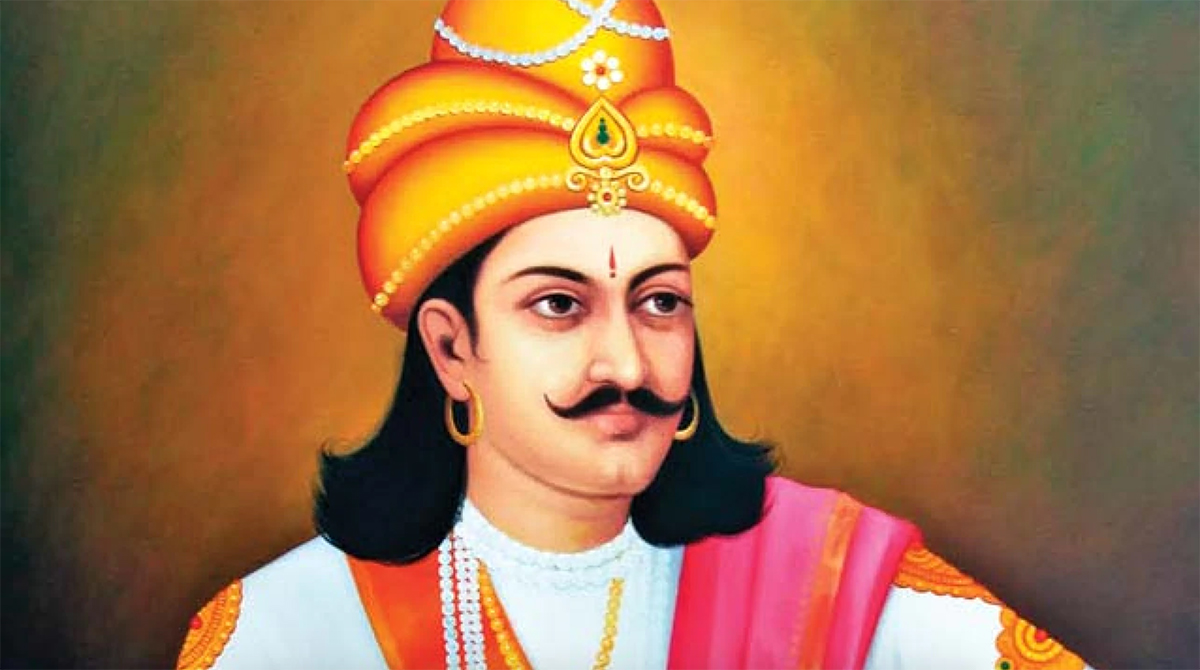
King Ashoka the Great is one of the greatest warriors of the Mauryan Dynasty. He was the son of King Bindusara. Historians have noted that Ashoka the Great was disliked by his father due to his appearance. However, King Bindusara also trusted King Ashoka a great deal, even having Ashoka handle the Takshashila revolt.
King Ashoka was born in India. Unfortunately, details of his younger years remain a mystery. Legends foretelling his youth spread a century after his death like his supposed ability to recall his past lives.
Despite the mysteries surrounding his background, Ashoke remains a celebrated Indian emperor even today. He ruled over the Maurya Dynasty from 268 to 232 BCE. During his reign, Ashoka the Great expanded his inherited empire throughout Afghanistan and Bangladesh while spreading Buddhism’s value to his people.
Ashoka’s actions during and after the Battle of Kalinga immortalized him. It is a famous historical battle between the Maurya Empire and Kalinga state. Archaeologists and historians agree that the battle took place on Dhauli Hills, Dhauli. Ashoka battled against the Kalinga state, which had no rulers, which resulted in the death of 250,000 people.
Ashoka’s kind personality was shown after the events of the Kalinga war. The cost of the war shattered his conscience. This resulted in Ashoka turning his back on wars entirely.
Julius Caesar
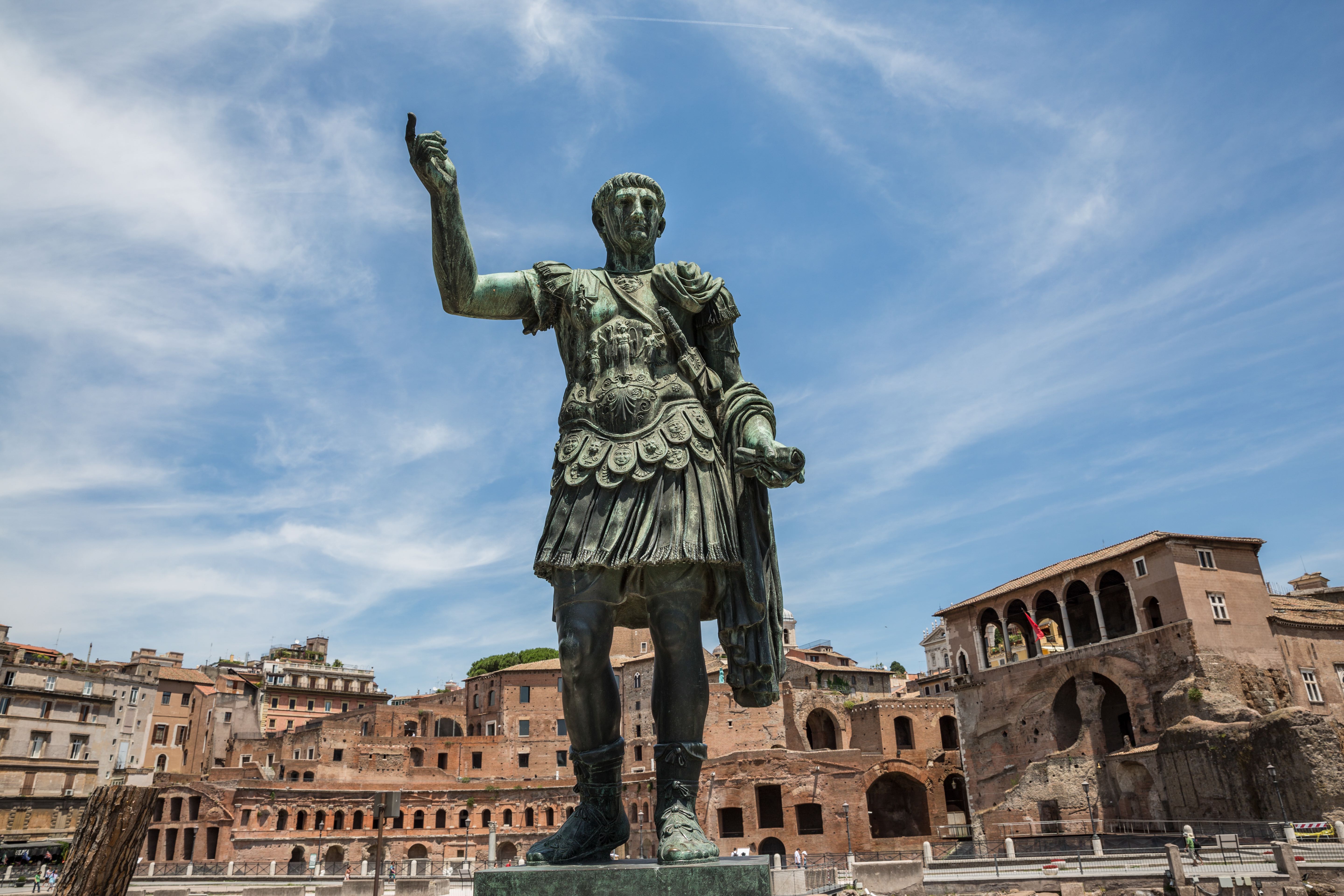
Another one of Roman’s legendary warriors is Julius Caesar. The Roman senate disagreed with his way of ruling, causing one of the most famous betrayals in history: Julius Caesar’s assassination.
The grudge between Julius Caesar and the senate started long before his assassination. Julius, who wasn’t even king at the time, denied the court ruling and traveled across the Rubicon River. This action may seem minuscule, but was the result of the Roman Senate’s fear of Caesar’s growing power. Knowing fully well that his actions would lead to a civil war, Julius Caesar committed insubordination.
Julius Caesar was an intelligent military tactician. This allowed him to rise through the ranks as he formed allies. The first one is Crassus, a man with political and military influence said to be the wealthiest man in Rome. The second one was Pompey, a political leader.
Pompey’s betrayal of Caesar stemmed from his jealousy. Especially since Caesar immortalized his name after the conquest of Gaul. Caesar had defeated the Gallic tribes, one of the strongest warriors that intimidated the Roman Empire. Caesar defeated Pompey in the Great Roman Civil War. Afterward, Caesar defeated Pharaoh Ptolemy XIII in the Battle of the Nile, giving Queen Cleopatra her right to the throne.
Julius had many more victories in battle. The Senate feared Julius despite his aid in reforming the Roman Empire. Their defense against his death was to protect the Roman Republic’s ideals. This backfired for the senate as it eventually led to the Liberator’s Civil War and the end of the Roman Empire.
Leonidas I of Sparta

Even today Leonidas of Sparta remains one of the greatest warriors in history. Leonidas I was the son of King Anaxandridas II, King of Sparta. He ruled Sparta along with his fellow king Leotychidas. This is because Sparta always had two kings. Sparta itself had a tradition of training young boys into the greatest warriors they can be. Mothers left their young sons to survive fierce battles against each other and wild animals. Survival is based solely on one’s physical abilities during these times. Once they graduate from this training, they are fully-fledged hoplites.
Leonidas of Sparta was accompanied by 300 hoplites during the Second Persian War. We know this battle as the Battle of Thermopylae or Battle of the 300. The oracle Sparta predicted that either Sparta herself would fall or one of her kings before the battle began. It came true, with Leonidas and his fierce hoplites perishing from the invading army.
Leonidas of Sparta remains one of the strongest warriors despite the aggravating loss. His death was symbolic for the Greeks and the bravery of his men proved what their people were willing to sacrifice for their freedom. Their actions immortalized Leonidas, whose bravery was a necessity to prevent the invading Persians.
Herodotus, a famous historian of his time, recorded in his series Histories that Leonidas was related to the mythical hero Hercules. While his published works did have a few inaccuracies, they are still generally accurate records to this day. Meaning that it could be possible that Leonidas was indeed Hercules’ descendant.
Richard The Lionheart

King Richard the Lionheart of England is next of the greatest warriors on this list. He was born in Oxford, England on the 8th of September 1157 and died on the 6th of April 1199. He was the duke of Aquitaine, Poitiers, and Normandy. Additionally, he was also the count of Anjou and a commander of the Third Crusade. While he was a well-known king skilled in bravery and combat, he was also a source of tall tales.
King Richard’s chivalry during his time as commander resulted in popular legends surrounding him. However, historians believe these are mere rumors and lack factual proof. What historians truly know is his rebellious acts against his father. Most of King Henry II’s sons conspired against him, including King Richard. The rebellion of the brothers against King Henry II resulted in two invasions of Aquitaine for King Richard, leading to his eventual defeat. However, King Richard eventually became heir to the throne after the death of King Henry II’s appointed heir.
King Richard’s rule in England is largely composed of funding the crusade. His one true goal was to conquer Jerusalem. He had no actual plans for England itself, resulting in exceeding funds to support the Crusade. Despite being a terrible king, Richard the Lionheart was fierce in battle, despite the inner conflicts between him and his allies. Eventually, Richard, the Lionheart fell to a fatal blow after a battle in the castle of Chalus. They eventually bury him Fontervault with his father and Queen Eleanor.
Otto Skorzeny

Out of all the greatest warriors, Otto Skorzeny is the most infamous of them. His entire existence goes to show that a strong soldier in the hands of evil can accomplish terrifying things. Otto Skorzeny was born in Vienna in 1908. He was a Nazi SS officer that voluntarily joined the party in 1933.
Being a Nazi officer is bad enough, but Skorzeny was also an important cog in Hitler’s dream. Skorzeny successfully eluded many assassination attempts against him. But his most popular accomplishment was the rescue of Italian dictator Benito Mussolini. Skorzeny rescued Mussolini in Campo Imperatore inside the Abruzzi mountains. Additionally, he managed to capture Hungarian leader Admiral Horthy in the Budapest royal palace.
Skorzeny was talented in infiltration. He managed to sneak into the allied forces with a small group of English-speaking Germans wearing American uniforms. He also participated in the torture of anti-Hitler conspirators after their failed assassination attempt against him.
All the terrible things Skorzeny did may have looked wonderful in the eyes of Nazi sympathizers. He managed to rescue important allies and capture leaders. Despite being a hindrance to the victory of the Allied powers, British officers agreed that Skorzeny’s actions as a soldier weren’t anything they would not have done. This resulted in the International Military Tribunal acquitting him of his participation in World War II.
Skorzeny eventually escapes Darmstadt prison while West Germany began their denazification trials in 1949. Despite the heinous crimes committed by the Nazi party, Skorzeny never renounced Nazism. He eventually dies at 67 of lung cancer and was reunited with his former colleagues.
Alaric the Visigoth
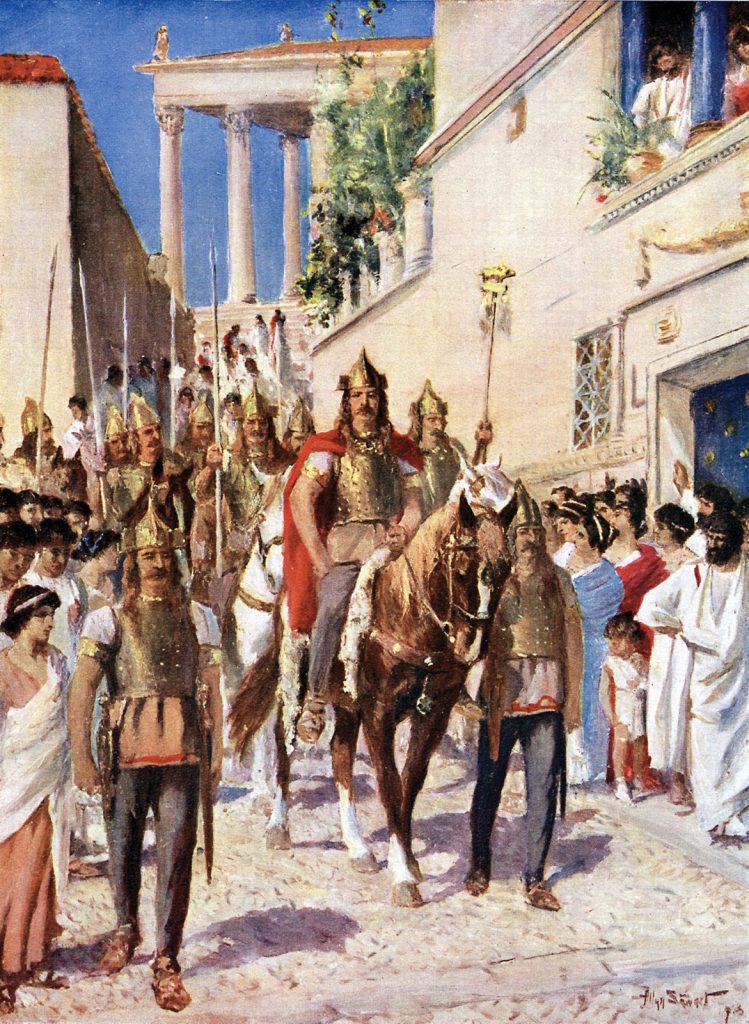
Alaric was one of the greatest warriors among the Visigoths. He was born in Peuce Island around 370 and died in Bruttium in the year 410. His achievements eventually lead to the Western Roman Empire being destroyed. This means that Alaric the Visigoth managed to ruin a seemingly invincible empire as the chief of the Visigoths.
Alaric was a nobleman who served as a commanding officer for Gothic troops under the Romans. However, Emperor Theodosius I’s death was enough for Alaric to abandon his station. This was because of the Roman’s failed promise to his tribe. Alaric’s men elected him chief of the Visigoths and declared war as they approached Constantinople. The Romans fought back, resulting in Alaric changing his tactics.
Alaric found success as he continuously conquered Greek territories such as Piraeus port, Corinth, Argos, Sparta, and Megara. Eventually, the Eastern emperor, Flavius Arcadius appointed him as master of the soldiers. This calmed the Visigoths and halted their conquest.
Alaric’s consistent battles with Rome remained. While his first two battles with them ended with his defeat, many of the tribesmen who worked under the Roman army deflected and pledged their loyalty to him. This only increased after an anti-barbarian movement sparked after the death of a Roman general named Flavius Stilicho, who defeated Alaric before.
Despite wishing for peace, Alaric was forced to lay siege to Rome because of their lack of cooperation. He dethrones the Western emperor Flavius Honorius and occupies Rome for three days. This is an impressive feat, especially since the Roman Empire was invincible for 800 years. In addition, the term barbarian did not match Alaric’s nature. Especially since the civilians were never harmed during their occupation.
Khutulun
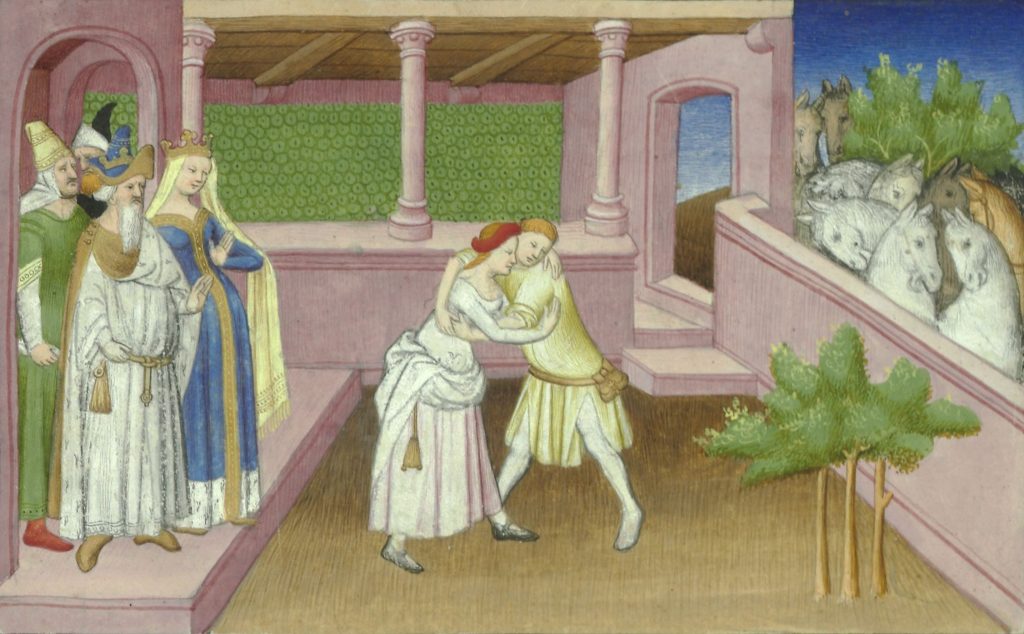
Khutulun is the first female on our greatest warriors list. She also goes by the names Aigiarne, Khotol Tsagaan, Ay Yaruq, and Aiyurug. She lived from around 1260 to 1306 as a Mongolian princess. Khutulun was the daughter of Kaidu, tracing her lineage to Genghis Khan and cousin of Kublai Khan, the founder of the Yuan dynasty. Kaidu favored Khutulun for her strength. She was talented in horseback riding, wrestling, and archery. Kaidu believed in his daughter’s abilities enough to have her with him during campaigns.
Khutulun and her father fought wars against her cousin Kublai Khan. Their goals were to continue the nomadic lifestyle of the Chagatai Khanate from Kublai Khan’s Chinese ways. As a noblewoman, many suitors wished for her hand in marriage. However, Khutulun declared she would only marry the man who can defeat her in wrestling. The records show that Khutulun had defeated an estimated 1,000 men during this declaration.
Kaidu aimed to make Khutulun his successor. This meant that he believed in Khutulun’s military prowess and leadership against all 14 of her brothers. However, the males of his tribe disagreed with his decision. Khutulun eventually died around the 1300s.
Historians discovered written experiences with Princess Khutulun by Rashid al-Din Hamadani, a famous historian, physician, and statesman. Rashid recorded that Khutulun was in love with a Mongolian ruler in Persia named Ghazan.
Marco Polo, the famous Venetian merchant, also recorded Khutulun’s activities. In his account, Marco Polo claims that Khutulun was agile and deadly. He describes Khutulun as bursting from the formation of her father’s army, slicing an enemy soldier, and quickly returning to her father’s side. This describes her agility and bravery, facing an army, killing one of them, and returning without a scratch.
Vlad the Impaler
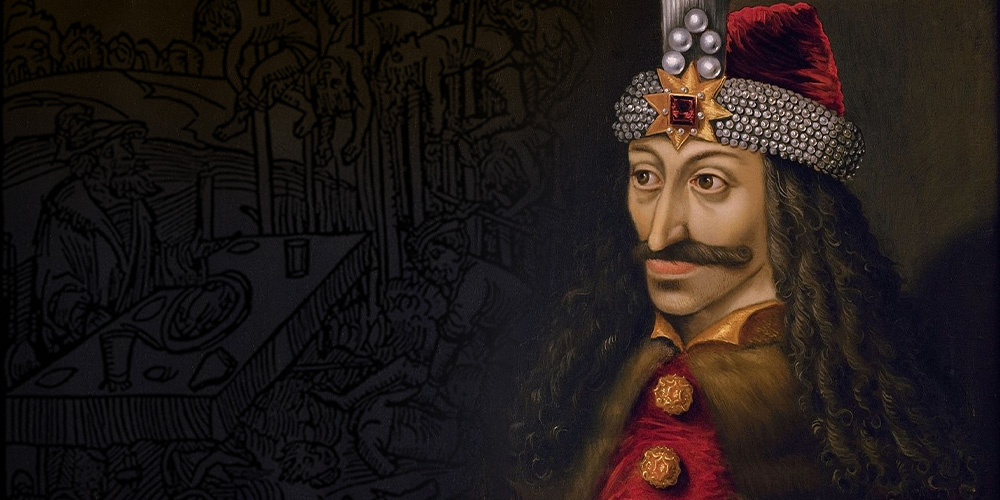
Vlad the Impaler is one you should be familiar with thanks to vampires. The impaler, whose real name is Vlad III Dracula or Vlad Tepes, was born in Transylvania as the prince of Walachia. He is Bram Stoker’s source of inspiration for his novel about vampires.
Ottoman Sultan Murad II took Vlad and his younger brother as hostages in 1442. During this time, Vlad II Dracul was ordered to defend against the Ottoman Empire. Upon the brothers’ return, Vlad discovered that his elder brother and father had died under Walachian nobles.
Vlad became his father’s successor after eight grueling years. To ensure his throne, Vlad tortured his enemies on stakes in the ground, impaling them alive. He favored this torture for local and foreign enemies alike. A famous account describes him leaving a battlefield with numerous impaled victims to frighten the Ottomans.
Unfortunately, Vlad was imprisoned by Matthias I of Hungary and killed in battle. Despite this, his efforts were widely acknowledged, and remains a hero to this day. Bram Stoker’s Dracula is said to mimic Vlad the Impaler’s nature. He was cruel and bloody, despite being a talented ruler, and managed to withhold the strength of the Ottoman Empire. Something that many would consider impossible unless they made deals with supernatural entities.
Vercingetorix
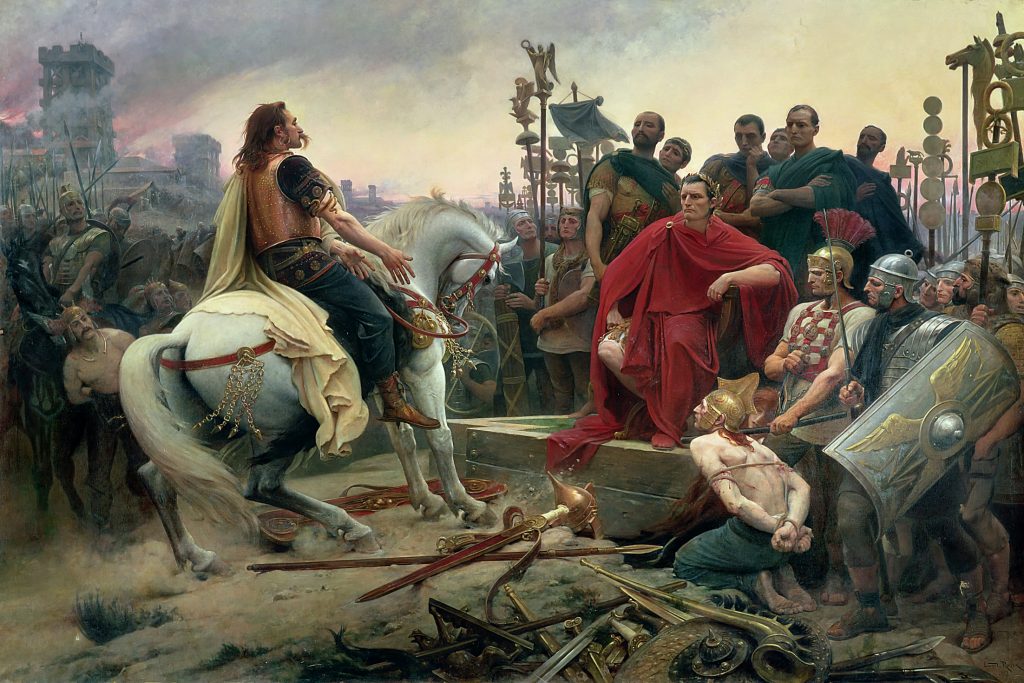
Most people don’t know about historical warriors like Vercingetorix. However, he was one of the very few warriors to defeat Julius Caesar. Vercingetorix was chieftain of the Arverni tribe. These tribesmen controlled a large amount of territory in the Auvergne region of central France.
Vercingetorix was the son of Celtillus, his predecessor on the throne. Once seated as king of the Arverni, Vercingetorix formed alliances with other Gallic tribes. This rare occurrence became an intimidating front for Julius Caesar, who was on his tour to defeat the tribes at the time.
Vercingetorix lost at the battle of Noviodunum and Biturigum. However, he also managed to destroy Caesar’s supply lines, prompting Caesar’s forces to begin a battle on unfamiliar terrain. This battle was followed by another successful attack on the Avernian hill-fort Gergovia, prompting the Roman army to direct their attention to him.
It was in the battle of Alesia that Vercingetorix surrendered. Julius Caesar cleverly cut off the supplies of Vercingetorix’s army and punished the citizens of Alesia for harboring them. Seeing that the war was coming to an eventual end, Vercingetorix bravely surrenders himself and is executed six years after.
While he may have lost to another one of our greatest warriors, Vercingetorix was the only one that Caesar had difficulty with. His leadership remains celebrated in the form of a 23-foot-tall monument in his honor by Napoleon III. Caesar’s statement regarding Vercingetorix was written in French on the monument, describing the bravery of the Gallic tribes and Vercingetorix’s impressive feat of uniting them all against the Roman Empire.
William Wallace
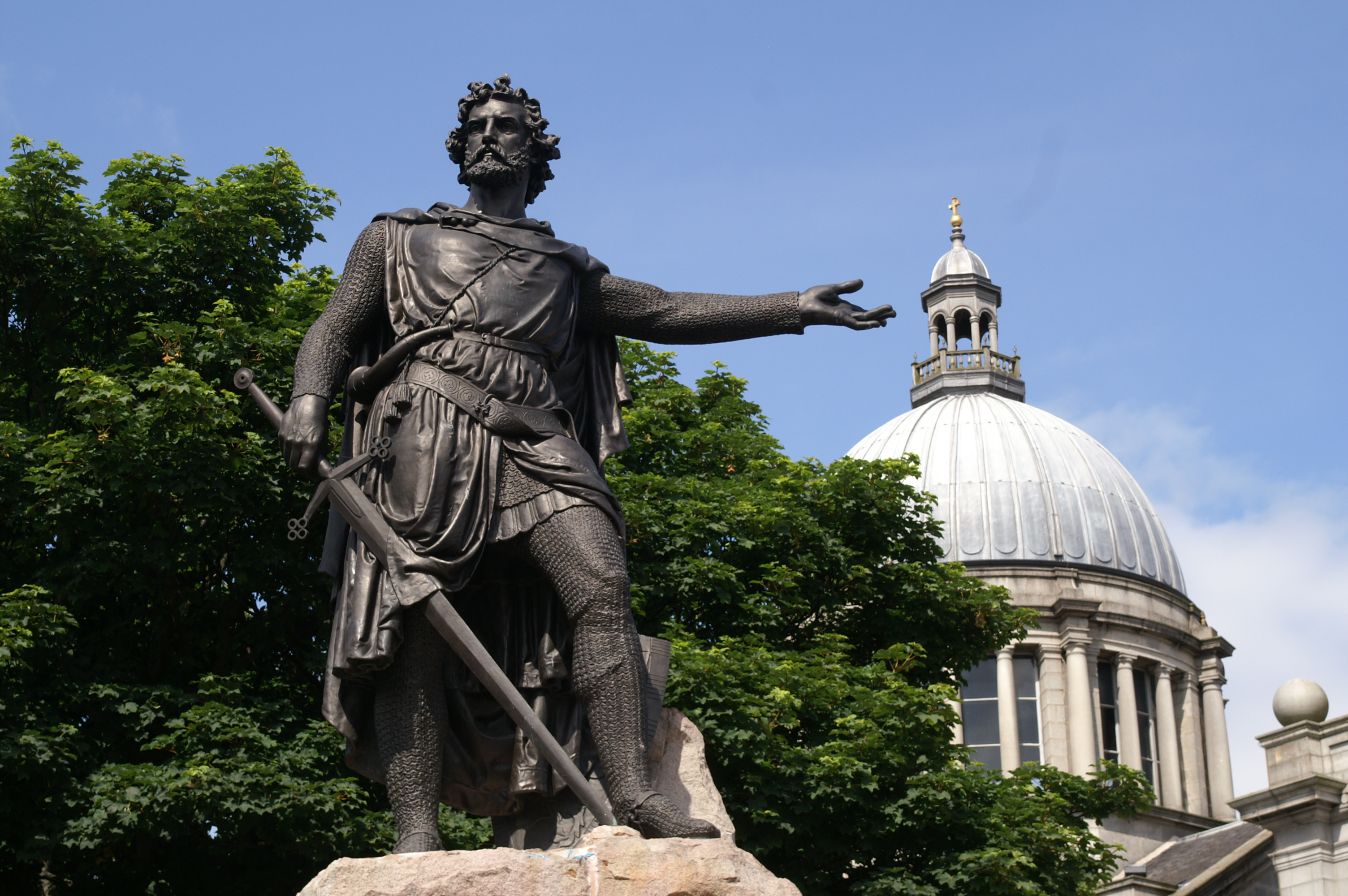
Up next on our greatest warriors is the beloved Sir William Wallace. He was born around 1270 around Paisley, Renfrew in Scotland, and died in London on August 25, 1305. His efforts to free Scotland from England’s King Edward I paved the way for his entitlement as Scotland’s greatest national hero.
Sir William Wallace rebelled when King Edward I captured and imprisoned Scotland’s king, John de Balliol. He was accompanied by 30 other men as they sparked a riot in Lanark, a small town, and killed the local English sheriff. Afterward, he formed an alliance with William “the Hardy” Douglas and deposed Scone’s English justiciar, and invaded the English garrisons between the rivers of Forth and Tay.
Sir Wallace and his allies pressed forward in the rebellion. One of his most successful battles was the battle of the Sterling bridge. Sir Wallace and Andrew de Moray managed to fend off English forces led by John de Warenne, the Earl of Surrey. Unfortunately, Moray had perished from the battle wounds despite the success which finally freed Scotland of the English regime.
Upon his return to Scotland, he was knighted with the title of the Guardian of Scotland. Sir Wallace was adept at organizing the armies and fixing the chaotic state of Scotland.
King Edward I attempted to invade Scotland once more. However, his military career was ruined after Sir William Wallace made sure his army was deprived of supplies by the time they reached him.
He was eventually captured by King Edward I through betrayal. Disemboweled, beheaded, and hanged in the process. His limbs were displayed in different parts of England while his head was on the London Tower. His last surviving ally, Robert the Bruce, won Scotland’s independence instead.
Attila the Hun
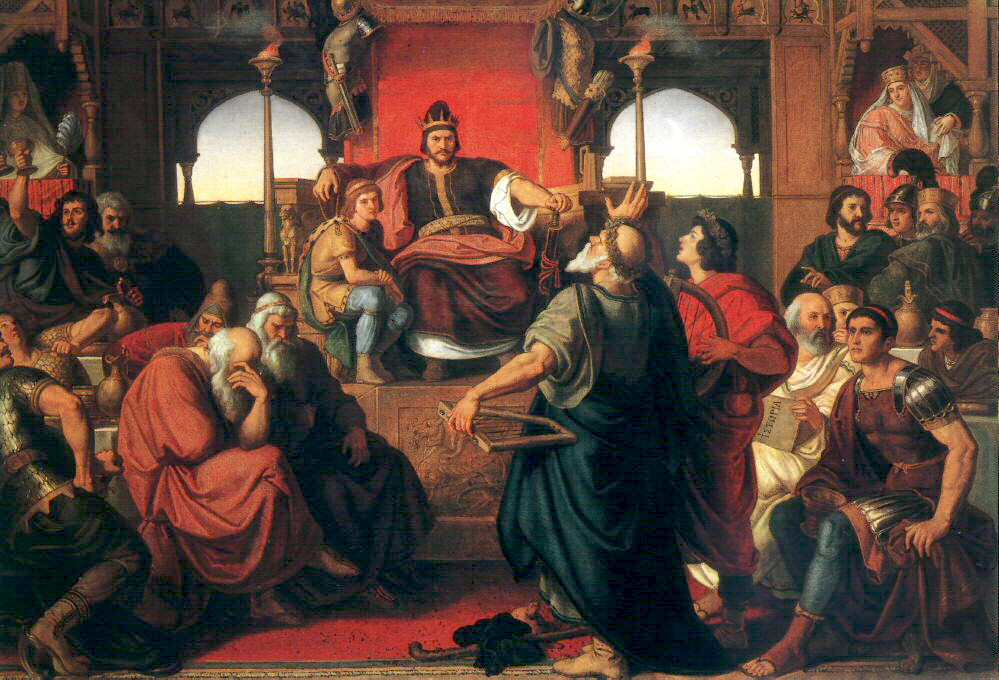
Another one of the strongest ancient warriors is Attila the Hun. He was born around 484 and 458 BCE and birthed the Hunnic Empire. Attila means “little father” which Historians suggest is not his real name but rather the name his subjects called him. He was the son of Mundzuk and nephew of Ruga, King of the Huns. He was established as Ruga’s successor after Ruga’s death in Constantinople. Just like Vercingetorix and Alaric the Visigoth, Attila the Hun went to war with the Western Roman Empire.
Initially, the Huns and the Visigoths were adversaries. However, the Huns allied with the Visigoths after their victorious battle against the Western Roman army in the Battle of Adrianople. The Huns began invading Roman territories with little consequences from the Roman army. Once Atilla was established as the leader of the Hunnic Empire, he managed a wide variety of tribes such as the Ostrogoths and Alemanni tribe into a successful army. This was only possible because of his personality which the tribesmen respected.
In contrast to the Roman army, Atilla’s empire was tightly knit and followed its leader’s orders without miscommunication. Unfortunately, historians still don’t know much about the Hunnic Empire. Their language is still being debated, let alone a detailed history of Atilla’s personality. However, it is true that Atilla’s leadership, alongside his brother Bleda, intimidated the Roman Empire enough to be paid never to invade.
Yue Fei
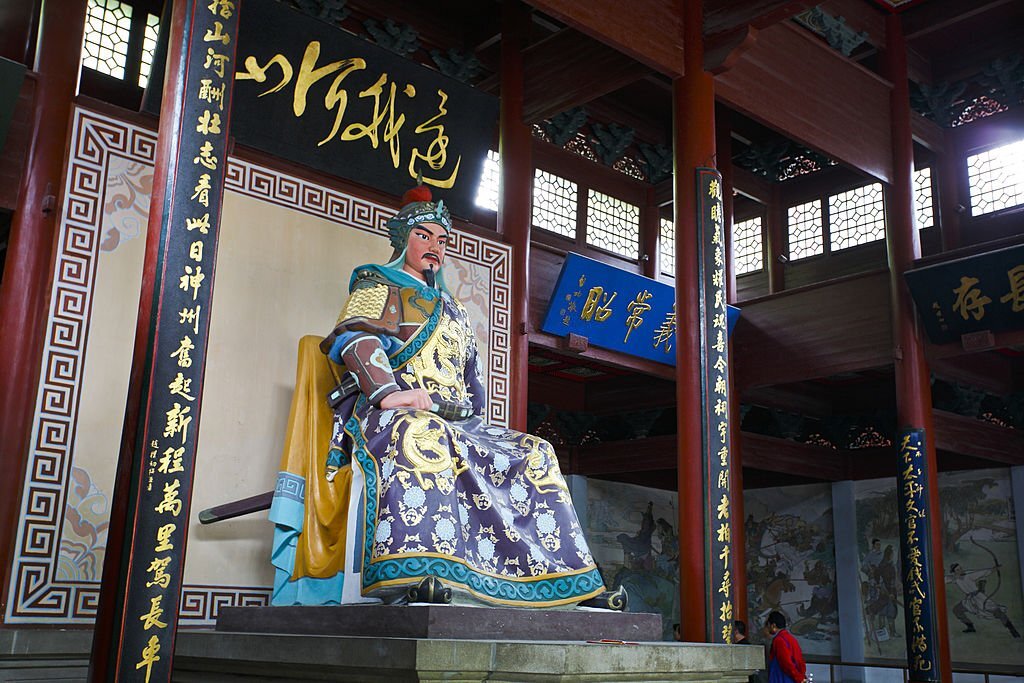
Yue Fei, also known as Yueh Fei, is one of China’s greatest warriors and a national hero of his country. He was born in Tangyin, Henan in the year 1103 and died on January 27, 1142, in what is now Hangzhou.
During Yue Fei’s time, North China was under the control of the Jin Dynasty made up of the Tungus Juchen. They were nomadic tribes of Manchuria who managed to take over Song and Kaifeng. The abdicated Emperor Huizong and his son Qinzong were imprisoned by the Tungus Juchen as well. It was Emperor Huizong’s son, Gaozong, who managed to fend off the Tungus Juchen in the South.
Yue Fei was Emperor Gaozong’s military commander for his Nan Song forces. If it wasn’t for Yue Fei, the Tungus Juchen would have defeated Emperor Gaozong as well. Yue Fei was a skilled military tactician. He made use of the natural landscape by making it difficult for the Tungus Juchen to arrive in South China thanks to their horses and the hills. Yue Fei took the advantage of this difficulty and the center of South China, the Huai River, and the Yangtze River.
Chinese citizens consider Yue Fei’s death a tragedy. Qin Hui and his faction did not agree with Yue Fei’s attempt to reclaim all of China. Since Qin Hui was prime minister, he decided against Yue Fei’s attempts and formed a treaty with the Jin Dynasty. As a result, Yue Fei was imprisoned and executed to appease the Tungus Juchen. Qin Hui, the traitor, was shunned by the 20th century. Meanwhile, Yue Fei became China’s heroic symbol of bravery against invasion.
Xiahou Dun
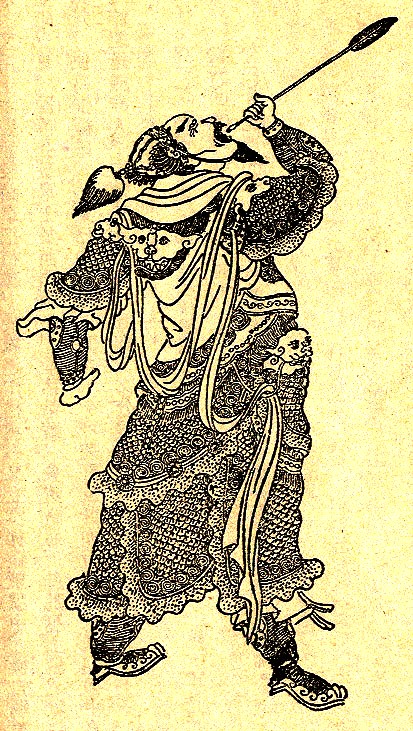
Xiahou Dun is not only one of China’s greatest warriors. He was also Cao Cao’s close ally and loyal friend. Unfortunately, nobody knows when Xiahou Dun was born. However, they do know that his birthplace is in Bozhou, Anhui. He died on June 13, 220 while serving Cao Pi, the successor of his dear friend.
Records of Xiahou Dun describe him as a passionate man with fierce loyalties. An account describes Xiahou Dun’s defensive nature when his teacher was insulted and Xiahou Dun responded by killing the offender at only 13 years old. He participated in Cao Cao’s battles against Dong Zhuo and slowly rose to the ranks before his passing.
Another tale describes how Xiahou Dun lost his eye. During a battle against Tao Qian, Cao Cao left Xiahou Dun in charge of Puyang. Unfortunately, Zhang Miao and Cheng Gong betrayed Cao Cao and pledged to Lu Bu. Cao Cao’s family was in danger, forcing Xiahou Dun to do a rescue mission with only a few armed men. Once Cao Cao heard of this betrayal, he returned and planned for war. It was in this battle that Xiahou Dun lost one eye. It is said that he had swallowed it after it lost its uses. People began calling him “One-Eyed Xiahou” which he detested. There were even witnesses to him becoming furious over his appearance.
Cao Cao cherished Xiahou Dun’s talents and fierce loyalty. Once he became a vassal king, Xiahou Dun was given a higher title than the others, giving the title General of the Vanguard and a garrison at Zhaoling. He dies shortly after being promoted to General-in-Chief.
Miyamoto Musashi

Next among our greatest warriors is Miyamoto Musashi. He was a ronin, one of the types of warriors skilled with the samurai sword. However, Musashi served no lord or had any affiliation. He was born on June 13, 1645, in Higo and died during the Edo period around 1603 to 1867. Miyamoto Musashi’s original name was Miyamoto Masana. However, he was also known by his pen name Niten. This is because Musashi was also a skilled artist.
Musashi first killed a man when he was 13 years old. This jumpstarted his career as a warrior. Musashi participated in the Battle of Sekigahara for Ishida Mitsunari. However, the war led to their defeat. He then became a ronin to create the ultimate sword technique. The result of his dedication was nito ichi-ryu, which is the Japanese style of fencing with two swords. You might know Musashi’s sword technique by its more popular name: kensai.
One of the most famous battles of Musashi was against Sasaki Kojiro. Both were equally talented in swordsmanship. However, Musashi only used a wooden sword carved from an oar. The duel ended with Musashi hitting Kojiro with a swift blow to his head. After this duel, Musashi retired and decided to teach others his ways to contain the Shimabara Rebellion of 1627.
There is a famous legend surrounding Musashi. On his deathbed, he had written all his experiences in a book titled The Book of Five Rings. It was studied intensively by the West to understand Japanese martial arts.
As Niten, Musashi was a skilled suiboku-ga. He created monochrome ink paintings and immortalized his artworks with birds.
Audie Murphy
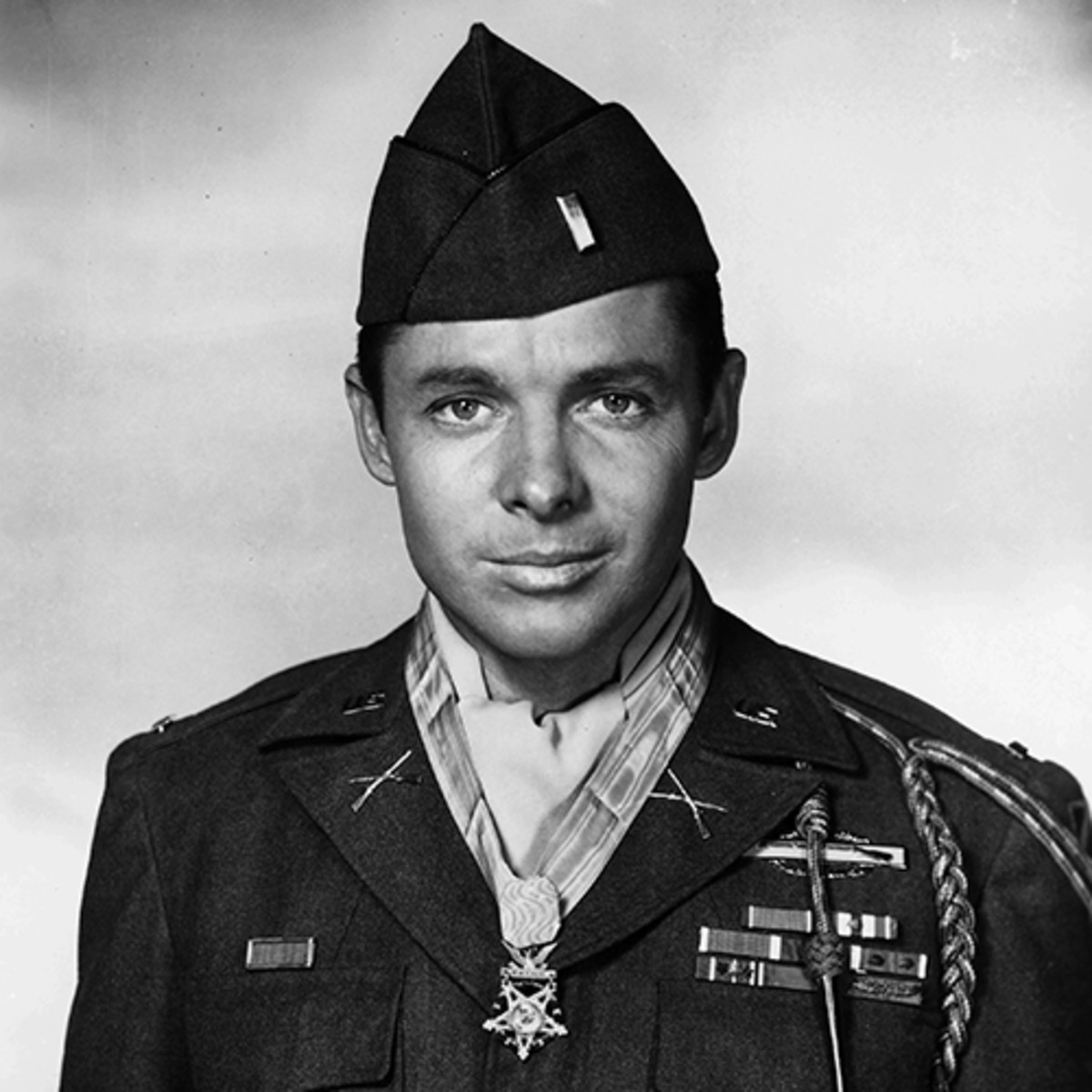
World War II gave Audie Murphy the chance to be one of the greatest soldiers of all time. Audie Leon Murphy was born on June 20, 1925, in Texas and died on May 28 1971 in Roanoke, Virginia. During World War II, Murphy used a false birth certificate to enlist in the army. His dedication was well-received as he managed to kill a large number of German soldiers during battle.
One of the most famous battles of Audie Murphy details his bravery. On May August 15, 1944, Murphy and his team battled on the shores of Yellow Beach. It was in this battle that Murphy’s best friend was killed. Murphy’s response to the Germans who falsely surrendered to shoot his best friend was to kill six of them, wound two of them, and imprison 11 of them. Another famous battle of Murphy was during his time as a commander. Murphy ordered his troops to retreat while he climbed on a burning tank destroyer, killing 50 German soldiers and defending the border for an hour against tanks. Audie Murphy’s achievements in the war were noticed by the upper brass. He received a wide variety of medals such as the Congressional Medal of Honor, making him one of the most decorated U.S. soldiers of World War II.
After his time in the military, Murphy became a movie star and acted in movies such as The Red Badge of Courage, The Quiet American, and To Hell and Back. Unfortunately, Audie Murphy died in a plane crash. He was an anti-war activist, speaking about his personal experiences with post-traumatic stress disorder and speaking for the health care of veteran soldiers.
Fu Hao
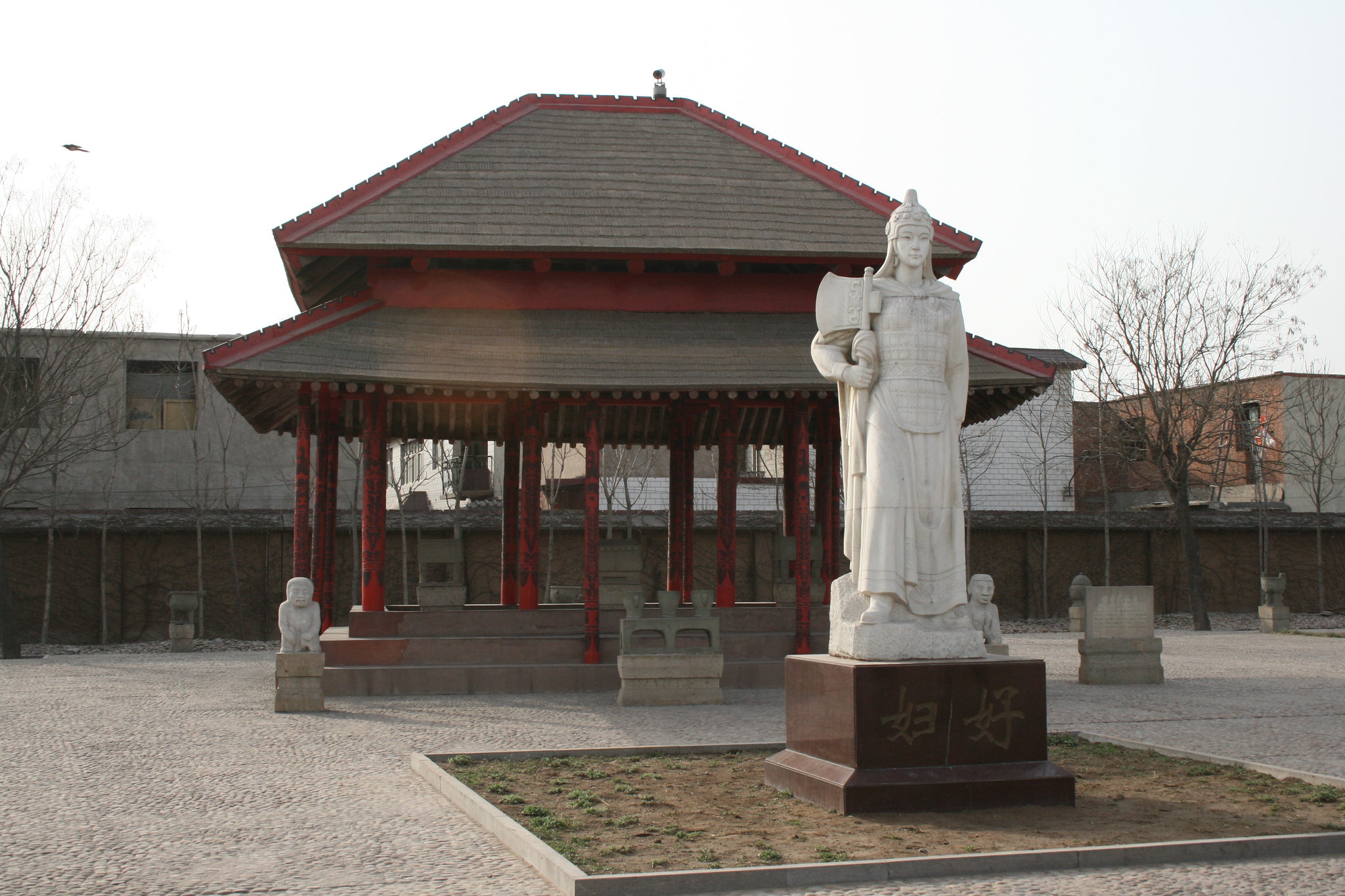
Most of the greatest warriors are dominated by men. However, the same cannot be said for ancient warriors. Names like Khutulun and Fu Hao are proof of this. Fu Hao died around 1200 BC. She was the wife of King Wu Ding during the Shang Dynasty and was referred to by her temple name Mu Xin or Lady Hao.
King Wu Ding had many wives but Fu Hao stood out because of her titles as high priestess and military general. Historians have difficulty tracing her achievements since the paper had not been invented during her lifetime. Additionally, the scarce records regarding Fu Hao have been lost or destroyed due to the passage of time.
Archeologist Zheng Zhenxiang rediscovered Fu Hao’s tomb in Yinxu. She was buried with treasures such as jades and bronze. Since there was no detailed record of her life, the tomb itself was the clue to who she was and her importance. Archeologists and historians believe that Fu Hao was one of the tribeswomen which King Wu Ding married. Fu Hao rose through the ranks unlike the other 63 wives of King Wu Ding. Eventually, she became recognized as one of King Wu Ding’s favorite consorts.
Scholars discovered that Fu Hao was a general, launching several campaigns under the Shang Dynasty name. She was incredibly strong, to the point of defeating the Tu-Fang, who was the Shang dynasty’s mortal enemies for centuries. She also fought against the Ba and Yi Qiang with famous generals following her every command. While other women were also involved in the military, Fu Hao’s achievements were too impressive not to be listed down.
Sun Tzu
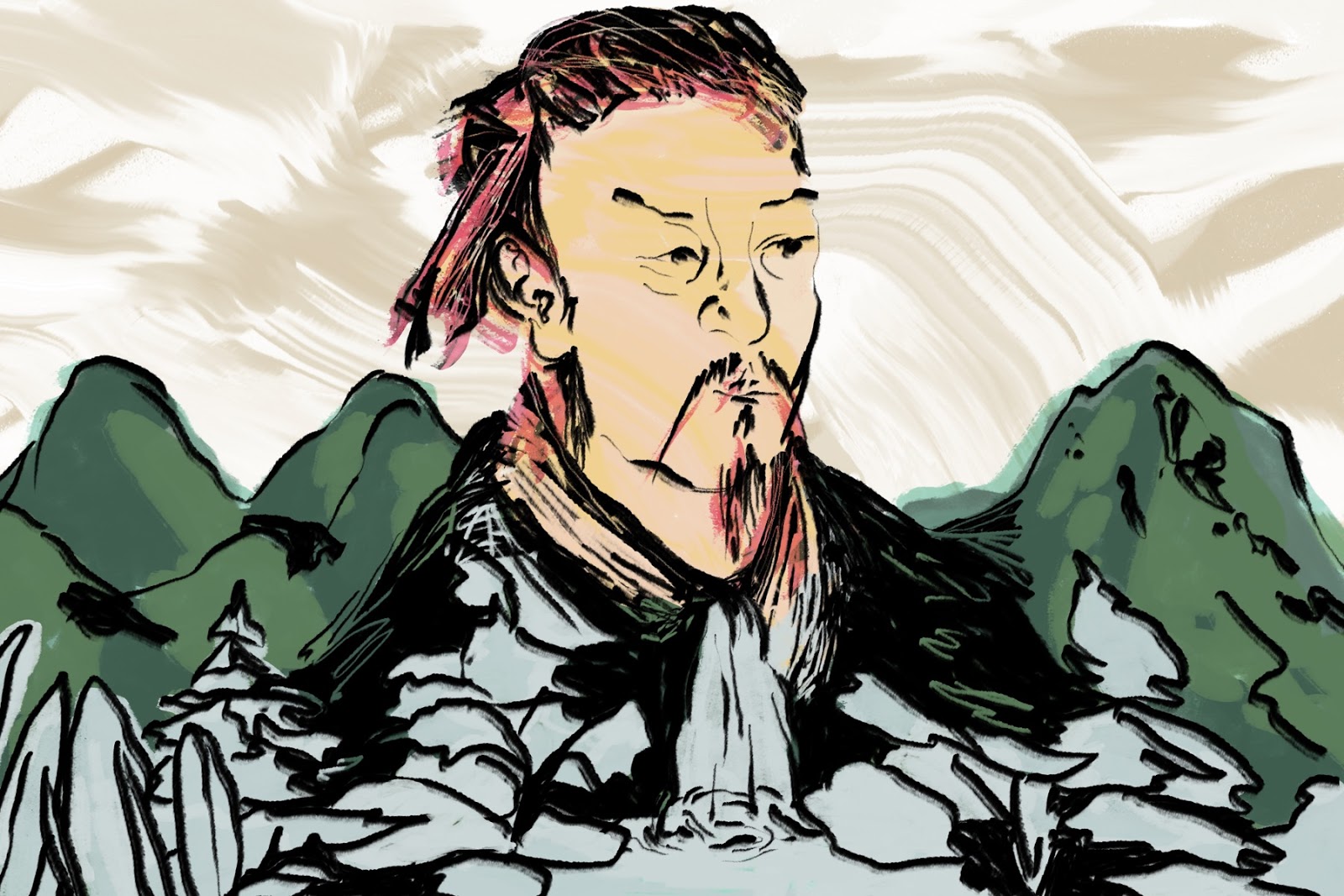
The deadliest warrior is the one that’s strong both intellectually and physically. Sun Tzu, also known as Sunzi or Sun Wu, is the famous author of The Art of War which was the first treatise on war and studied the art of the military. Sun Tzu served under the Wu state as both general and military tactician around 770 and 476 BC. His experience in both fields gave way for him to write The Art of War during the Warring States period in China, which was a time filled with power struggles between seven states.
His book became a guideline for all commanders. It detailed terrain use, accurate information, movements, and placements within the field of battle, all remaining effective today. It was even used by Mao Zedong to fight against the Japanese and Chinese Nationalists. The same can be said by China’s first emperor, Shi Huangdi, who regarded Sun Tzu’s book as an important guideline for defending China.
Sun Tzu’s most notable achievement was the Battle of Boju between the Wu State and Chu State, in which an overwhelming defeat for the Chu state cost their capital city. Additionally, Sima Qian, the author of Records of the Grand Historian, explained that Sun Tzu had never lost a battle in his 40 years as a general. Making him an undefeated force of both brains and brawn.
Hannibal Barca
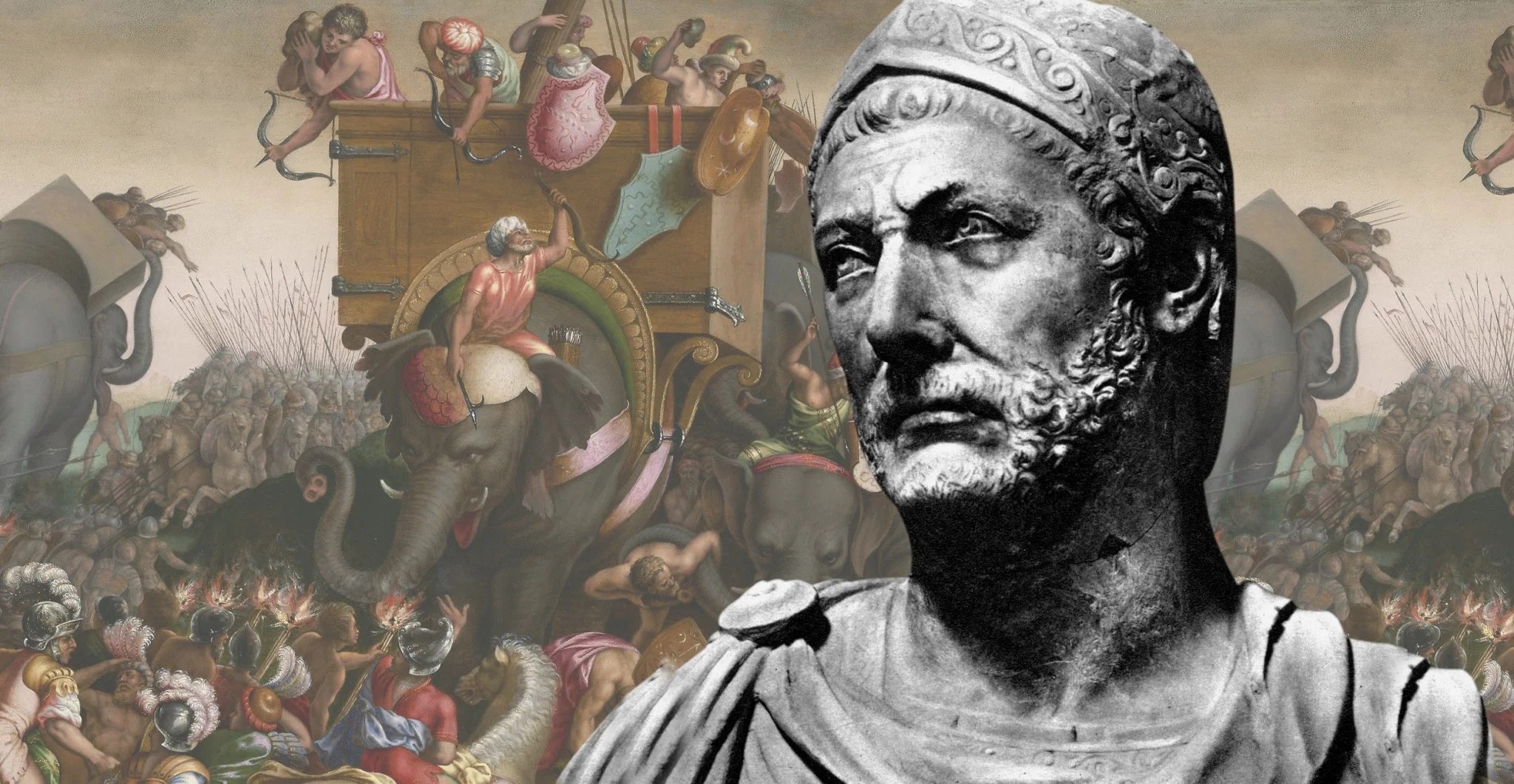
Hannibal Barca is next on our list of the greatest warriors in history. Barca was born in North Africa around 247 BCE. He died in Libyssa, Bithynia (now known as Gebze, Turkey) between 183 to 181 BCE. He was one of the greatest warriors of the Carthaginian forces who fought bravely against Rome during the Second Punic War.
Hamilcar Barca was the father of Hannibal. Just like his son, Hamilcar was a Carthaginian general. Historians Polybius and Livy describe Hannibal’s early life as tumultuous. Hannibal was sent to Spain and forced to oppose Rome for eternity. This sealed Hannibal’s fate as a public enemy of Rome up until his death.
Hasdrubal’s order for Hannibal was to gain more allies in Spain. He married Spanish princess Imilce and overpowered different Spanish tribes. His career only flourished when he successfully defeated the Olcades and the Vaccaei. This overwhelming victory led to his control over the Carpetani region.
Hannibal’s title as one of the greatest warriors doesn’t just come from his skills in battle. As a military leader, Hannibal managed to transport elephants, horses, and his army in a river while defeating an ambushing tribe of Gauls. He strategically countered the Gaul’s ambush and managed to retain a large chunk of his army without any further damage. He even manages to obtain an ally named Boii, a Gallic leader whose knowledge of the alps greatly aided Hannibal’s conquest.
The defeat of the Carthage against Rome formed a treaty between the two nations. Romans only viewed Hannibal as the source of strength for the Carthage and feared his charm and abilities would once again rise and attempt to destroy the Roman Republic. He eventually faces ridicule and commits suicide instead of being captured by Roman forces.
Basil II

Another one of the greatest warriors in ancient history is Basil II, who is also known as Basil Bulgaroctonus and Basil, Slayer of the Bulgars. He was born either in 957 or 958 and died on December 15, 1025. Basil II was a Byzantine emperor up until his death. He was responsible for extending the Byzantine empire’s imperial rule in notable nations such as Armenia, Georgia, the Balkans, and Mesopotamia. Additionally, Basil II also increased his domain after effectively killing off people in power such as the church and the military nobles.
Historians consider Basil II one of the greatest warriors and emperors of the Byzantine empire. He was known to be an intimidating person with a keen intellect for statesmanship that the Byzantine empire lacked.
Basil II and his brother, Constantine, became emperors of the Byzantine empire at a young age. This resulted in endless power struggles being exposed to the two brothers. Eventually, Basil II receives help from his uncle Basil the Chamberlain. Once he received complete authority from his uncle, he cruelly banishes him to regain sole command.
Basil II carried out his duties as the Byzantine emperor. However, he aimed his movements on the extending territories both nearby and abroad. He managed to overtake lands in Armenia and Georgia, but his most successful conquest was the Balkans. At the time, the Bulgarian kingdom was under Tsar Samuel. Basil II obtained allies long enough that his campaigns against the Balkans became successful.
Additionally, Basil II even blinded over 100 Bulgarian soldiers by leaving only one eye for each of them. His only objective in torturing these soldiers was to present them to their tsar, who fainted at the sight of his cruelty.
Miltiades
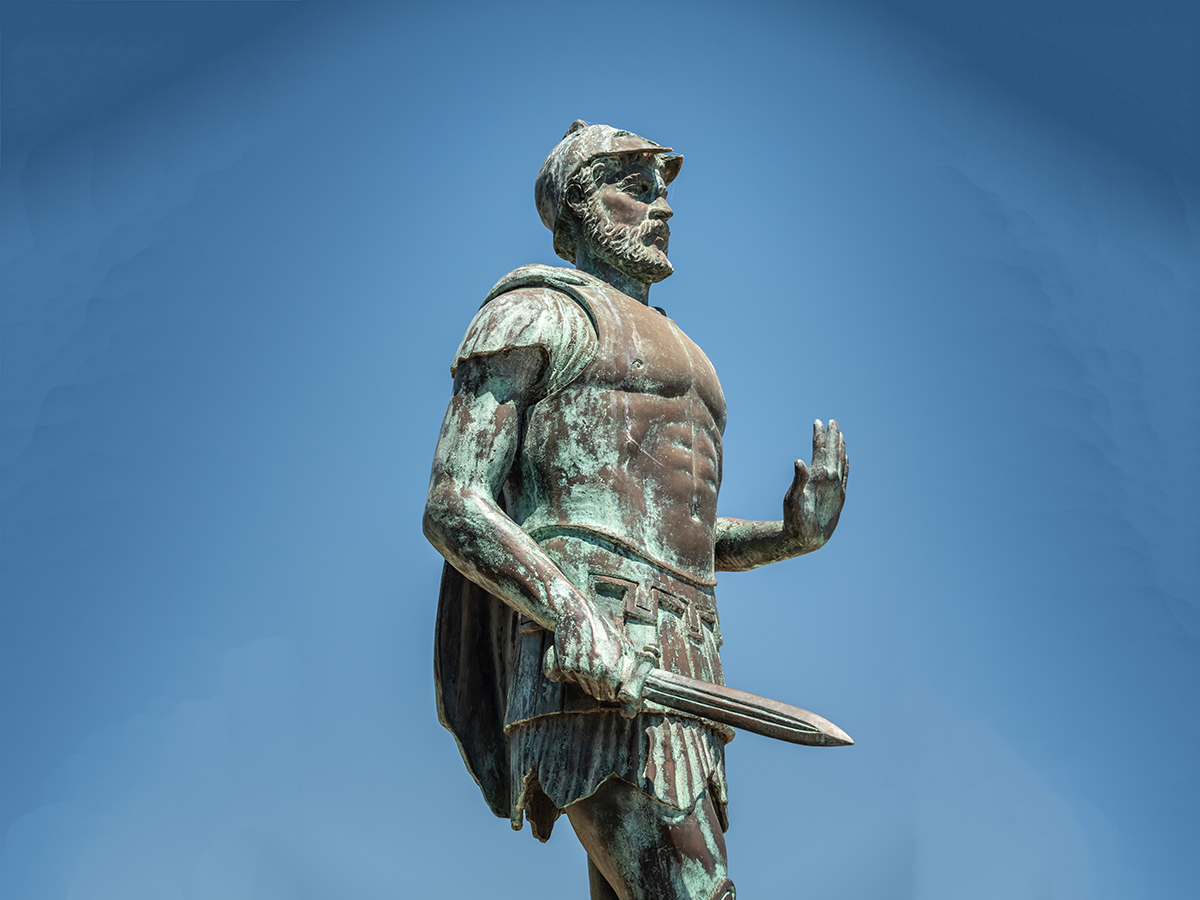
Not only is Militiades one of Greek’s greatest warriors, but he is also a national hero. Miltiades was the son of Cimon, an Athenian noble who was incredibly talented in charioteering.
Records describe Miltiades as a tyrant. This is accurate because of the way he treated his subjects. Upon inheriting the rule of Chersonese, he locked himself in the palace and refused to meet with his subjects. When the elders of the territory attempted to manipulate him, he locked them up and secured his authority as ruler. Furthermore, he married Thracian princess Hegesipyle in order to maintain an alliance with King Olorus, increasing pressure against any attempt at a revolt.
Despite being a tyrant, Miltiades managed to redeem himself during the Battle of Marathon. At this time, Miltiades was exiled from Chersonese after betraying Persian King Darius I. Under Persian rule, Miltiades was a vassal king and a double agent for the Athenians. Once the plans were revealed, Miltiades had to escape Chersonese and be ridiculed for his handling of Chersonese in Athens.
The redemption came in a battle that Miltiades planned perfectly. He removed the traditional Greek formation and created his plan by adding wing side forces instead and thinning out the front lines. The Persians weren’t prepared for this and were ambushed once the wing side forces revealed themselves, securing victory for Greece. In addition, Miltiades quickly marched to Athens to deflect the Persian army before they had a chance to join Persian sympathizers. This allowed total defeat of the Persians, who sailed back home.
He dies of gangrene and is imprisoned after another battle in Aegina. However, he has now been declared honorable and his burial site restored.
Teuta

Another excellent example of our greatest warriors is Pirate Queen Teuta, also known as Teutana, mistress of the people. Nothing much is known about Teutana’s earlier days, but historians have confirmed she ruled Albania from 231 to 227 BCE.
Teuta was married to Illyrian king Agron, who died in 231 BCE. This begins Teuta’s reign as Queen Regent to her stepson, Pinnes. However, Teuta was no ordinary queen regent. The pirate queen continued the policy of her deceased husband by expanding in the Adriatic Sea.
She was one of Illyria’s greatest warriors, claiming the seas and raiding merchant ships and coastal towns alike. Teuta seemed to enjoy conquering Roman and Greek ships in particular, causing her to be noticed in the Roman Republic’s eyes. As a result, the Roman Republic demanded that Teuta stop her piracy.
Teuta’s rowdiness was under scrutiny for the Roman Republic. As a result, one of the ambassadors that the Roman Republic sent insulted her. In anger, Teuta killed the ambassador, which became the ultimate disguise to declare war against her and the Illyrian kingdom.
The Romans unleashed their rage against Teuta’s reign by sending an overwhelming army against Teuta, who had to accept the peace treaty that was not in her favor. Despite this defeat, she was still acknowledged by the Roman Republic as a figure that needed to be dealt with to maintain their power.
Roman and Greek historians are incredibly biased when it comes to Teuta. Unfortunately, their records of her are one of the few that survived. They were misogynistic towards a female ruling the seas and therefore gave an unreliable description of her personality.
Boudicca
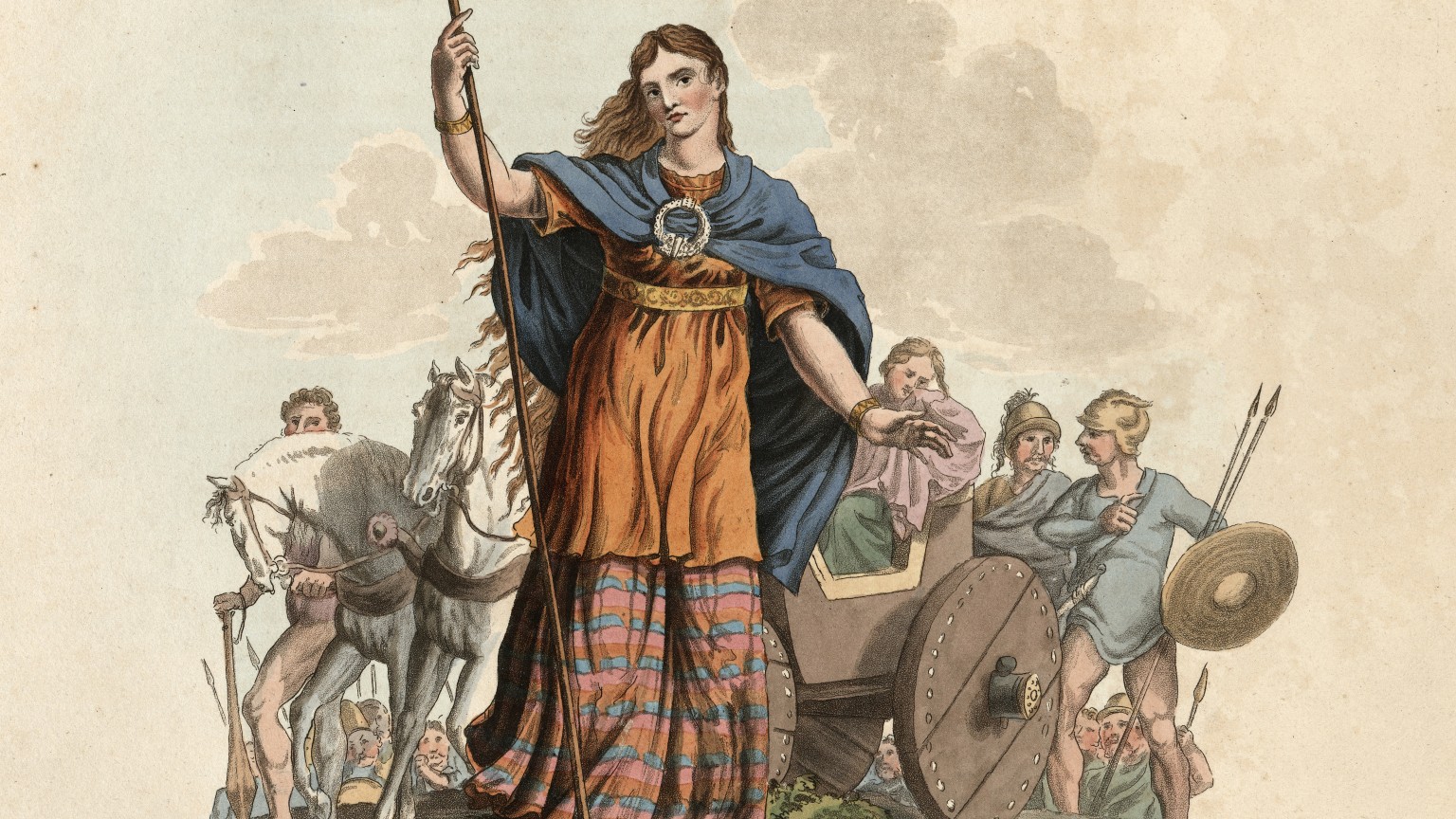
The last female of our greatest warriors is Boudicca, the queen of the Iceni people. Boudicca, also known as Boadicea or Boudica, was a warrior queen who lived in East Anglia in England.
Boudicca was married to King Prasutagus of the Iceni people. When the Romans conquered the southern part of England, they allowed her husband to remain as ruler. However, when King Prasutagus died, the Romans ruled the Iceni people instead and took the possessions of the tribesmen. Historians also believe that Boudicca and her daughters were flogged, raped, and stripped of their clothing.
Boudicca, who sought vengeance for the dishonor the Iceni experienced, rebelled against the Roman armies. She formed alliances with other tribe members and defeated over 70,000 Roman soldiers. She defeated the Roman Ninth Legion and then ruined Colchester, London, Veralumium, and the capital of Roman Britain.
Eventually, the Roman army defeated her. Historians believe that Boudicca refused capture and chose to kill herself through poison. However, it is still unconfirmed. Archaeologists still haven’t found where she last fought or found evidence regarding her death.
Horatius Cocles

Last on our list of greatest warriors is Horatius Cocles. He was alive around the 6th century BC and is considered a Roman hero. Historians debate whether or not Horatius was an actual person. This is because his actions that immortalized his name can be considered an impossible feat. Records of Horatius Cocles have varying accounts of his bravery with his hometown, date of birth, and death all unknown.
Publius Horatius Cocles was a junior officer in the Roman army. He was in charge of guarding the Sublican Bridge when the army itself began retreating in an attempt to block the Etruscan army. All accounts describe Horatius fighting with two senior officers: Titus Herminius Aquilinus and Spurius Larcius. However, their reasons for fighting by Horatius’ side are still being debated.
Eventually, Larcius and Aquilinus retreated once the Etruscans managed to begin crossing the Sublican bridge. Horatius does not leave his post regardless of his senior officers. Instead, he piled the dead bodies to form a wall and ordered his men to destroy the bridge he stood on. The mythical part of Horatius’ actions begins here as it describes Romans watching him be stabbed and hit with arrows but staying in his post. Whether he lived or not to tell the tale depends on the accounts you read. Some poems describe Horatius jumping off the broken bridge and surviving, while others note that he perished but saved Rome.
Conclusion
We hope you enjoyed learning about the best warriors of all time. Whether they were defending their country, expanding their territory, or even causing chaos wherever they went, it’s clear these were feared, warriors.
Some of those we mentioned were great rulers as well. Noting that a great warrior should also be intelligent in order to predict their enemies’ movements. Meanwhile, there are other warriors we mentioned that had courageous hearts. This means that being strong itself isn’t all that is needed to become a great warrior. Your gender also doesn’t apply to whether or not you can become one.
This list can’t tell you who is the greatest warrior of all time. However, it explains how these great warriors managed to become immortalized by their actions. Modern warriors nowadays have become military soldiers. Assassins, also known as hitmen, are still alive today as well. However, learning about the trials they faced allows us time to reflect. Did war ever bring anyone any good? If so, was the price they paid truly worth it?
Whether they are ancient warriors or modern soldiers, they have paid great sacrifices and reflected great spirits. So they will be loved and respected by many people! It’s not easy for war and military fans to express their preferences and personalities in the right way. Military Coins may be a good option, and they can often be customized with personalized designs. Not only can they be used as a memento and collection for yourself, but they also make a great gift for fellow enthusiasts.

Was this page helpful?
Our commitment to delivering trustworthy and engaging content is at the heart of what we do. Each fact on our site is contributed by real users like you, bringing a wealth of diverse insights and information. To ensure the highest standards of accuracy and reliability, our dedicated editors meticulously review each submission. This process guarantees that the facts we share are not only fascinating but also credible. Trust in our commitment to quality and authenticity as you explore and learn with us.


